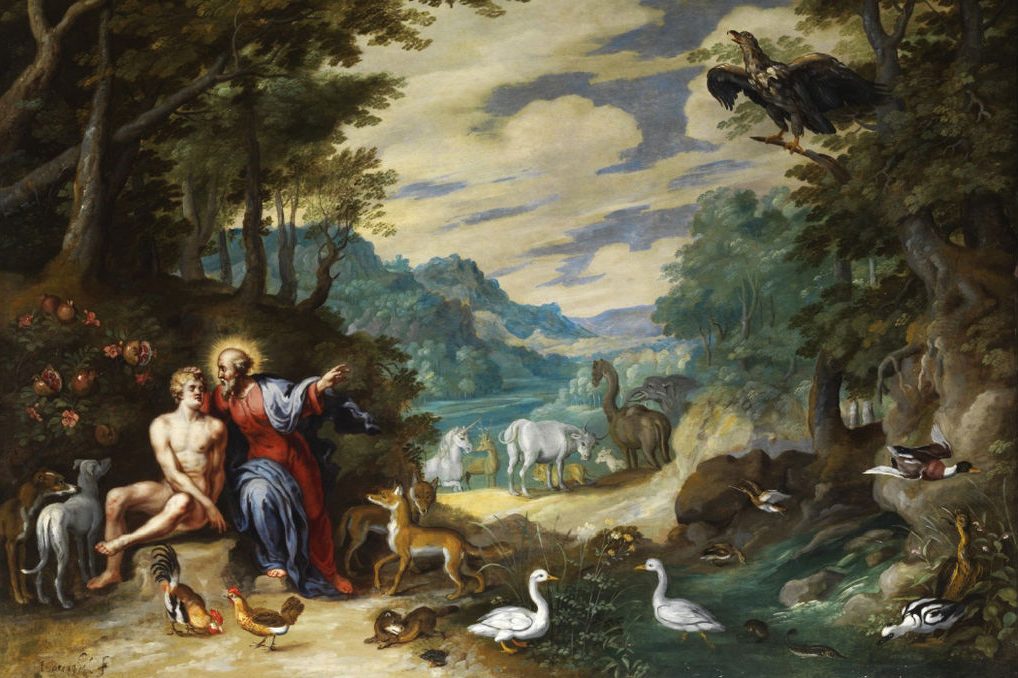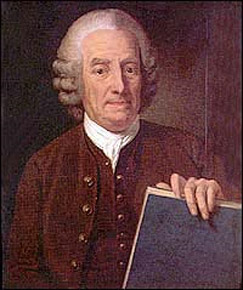Featured Bible Term: What is the internal meaning?
Adam: Man, but not the man you think he is
Adam is one of the most crucial and most controversial figures in the Bible, dividing even the faithful into camps: those who believe he literally existed, created by God as the first human; and those who believe he is a figurative character, embodying spiritual and moral lessons but not an actual person.
To some extent, this dispute is caused by linguistics. The word “adam” is Hebrew for “man” or “humankind,” and it is consistently translated that way in the first chapter of Genesis.

"Creation of Adam," by Jan Brueghel the Younger.
In fact, in that chapter “adam” is plural, and includes men and women: “So God created man (adam) in his own image, in the image of God created he him; male and female created he them” (Gen. 1:27, KJV). Yet in later chapters – even including the genealogy of Jesus in Luke 3:38 – “Adam” is used as a name, and seems to refer to a specific person.
The common interpretation is that Gen. 1:26-28 is a general statement of the creation of people, and that the specifics of that creation are laid out in the next chapter when God first creates the man Adam and the woman Eve. But linguistically, “adam” in the second chapter is the same as “adam” in the first chapter. In fact, while the King James Version of the Bible switches from “man” to “Adam” midway through the second chapter (Genesis 2:19), Young’s Literal Translation – created to be as close to the original language as possible – does not use “Adam” as a named person until Genesis 4:25, long after the Garden of Eden. Eve, meanwhile, is simply “the woman” in all translations until Gen. 3:20, which is after she and Adam have eaten the forbidden fruit and been expelled from the Garden.
So what does this mean? Swedenborg says that the “man” created in Genesis represents the Most Ancient Church, which was the first church among early humans and was the purest ever to grace the earth. People of the church were motivated purely by the love of the Lord, and lived in peace, harmony, mutual love and inexpressible wisdom. This follows from the idea that the Lord is the one true human – and is, in fact, humanity itself. Since the Most Ancient people were so close to the Lord, they are represented by “adam” in its meaning of “man” or “humankind.”
The first ripple in the relationship between God and humanity came as people began wanting a greater sense of life as their own, as they began to want to feel their love and wisdom as their own instead of things flowing in from God. The Lord gave them the power to feel as they wanted to, which is represented by the rib taken from the “man” Adam and formed into the “woman” Eve. This would, of course, lead to the downfall of humanity; because of that sense of self, people were drawn to the power of their own senses and their own minds – the serpent – instead of trusting the Lord. Swedenborg says the switch from “man” to “Adam” represents the change made in people when the Lord allowed them to have that sense of self.
In a general sense, then, Adam represents the Most Ancient Church. In specific, when named as an individual, he represents that church as it first began turning away from the Lord. In both senses, though, his story is spiritual history, not natural history; Swedenborg is clear that Adam is a figurative character, and was not an actual individual human being.
Arcana Coelestia (Elliott) n. 478
- The reason he is called Adam is that the Hebrew word Adam means man. But the fact thatAdam was never used as a proper name, only Man, is quite clear from the consideration that both here and earlier he is spoken of in the plural and not in the singular, and that the term refers to both man and woman. The two together are called Man. Anyone from these words that both are included, for it is said, 'He called their name Man on the day in which they were created', and similarly in 1:26, 28, 'Let Us make man in Our image, and they will have dominion over the fish of the sea. This shows also that the subject is not about someone who, when created, was the first human being of all, but about the Most Ancient Church.
Divine Providence (Dole) n. 241
- 1. The wisest people of all, Adam and his wife, let themselves be led astray by the serpent, and God did not use his divine providence to prevent it. The reason for this is that Adam and his wife do not mean the first people created on earth but the people of the earliest church. It is their new creation or regeneration that is being described in this way, the actual new creation or regeneration by the creation of heaven and earth in the first chapter, their wisdom and intelligence by the Garden of Eden, and the end of that church by their eating of the tree of knowledge.
Divine Love and Wisdom (Dole) n. 325
- Since there is a human image to everything in the universe, Adam's wisdom and intelligence are described by the garden of Eden, where there were trees of every kind, as well as rivers, precious stones, and gold, along with the animals that he named. All of these meant things that were within him and that made him what we call "human."
Arcana Coelestia (Elliott) n. 313
- These facts that have now been stated concerning the first man show that he is not the source of hereditary evil existing in everyone alive today, and that people are wrong if they imagine that no other hereditary evil exists apart from that which emanated from that first man. For the subject here is the Most Ancient Church, which is called 'Man'. When it is called Adam it means that man was taken from the ground; that is, from not being 'man' that Church became man through regeneration from the Lord.
Arcana Coelestia 7120
There are two words in the original language meaning a person; one is adam and the other is enosh. A person called adam means a member of the celestial Church, while a person called enosh means a member of the spiritual Church.

Emanuel Swedenborg
The ideas on this site are based on the works of Emanuel Swedenborg, an 18th-century Swedish scientist and theologian. Swedenborg claimed that his religious writings, the sole focus of the last three decades of his life, were done at the behest of the Lord himself, and constituted a revelation for a successor to the Christian Church.
In keeping with Swedenborg’s own statements, modern believers downplay his role as author, attributing the ideas to the Lord instead. For this reason they generally refer to Swedenborg’s theological works as “the Writings,” and some resist the label “Swedenborgian” as placing emphasis on the man rather than the message.
Since “the Writings” would be an unfamiliar term to new readers, we have elected to use the name “Swedenborg” as a label for those theological works, much as we might use “Isaiah” or “Matthew” to refer to books of the Bible. The intent, however, is not to attribute the ideas to Swedenborg, any more than we would attribute the divinity of the Bible to Isaiah the man or Matthew the man.
So when you read “according to Swedenborg” on this site, it’s really shorthand for “according to the theological works from the Lord through Swedenborg.” When you read “Swedenborg says,” it’s really shorthand for “the theological works of Swedenborg say.”
